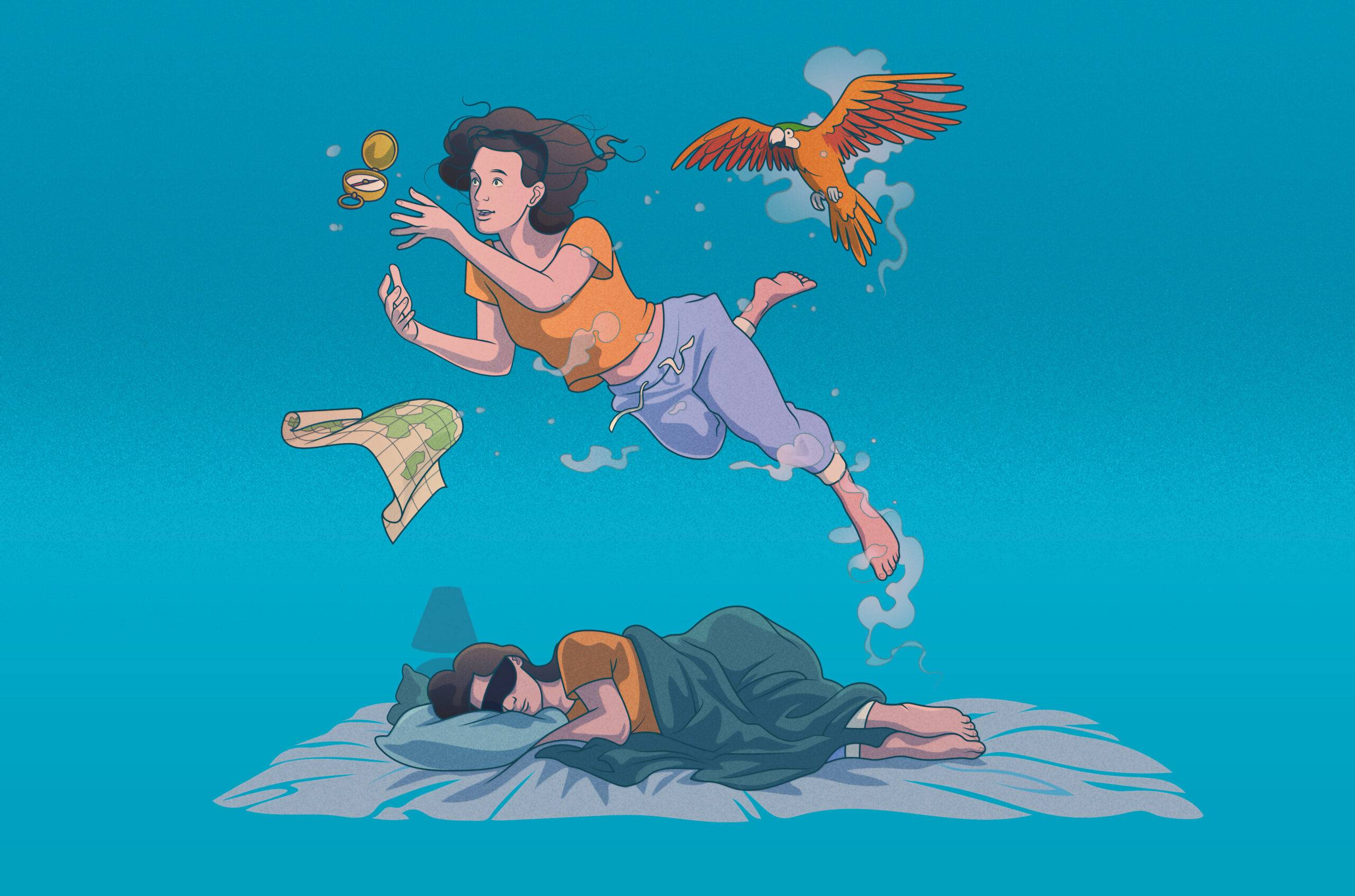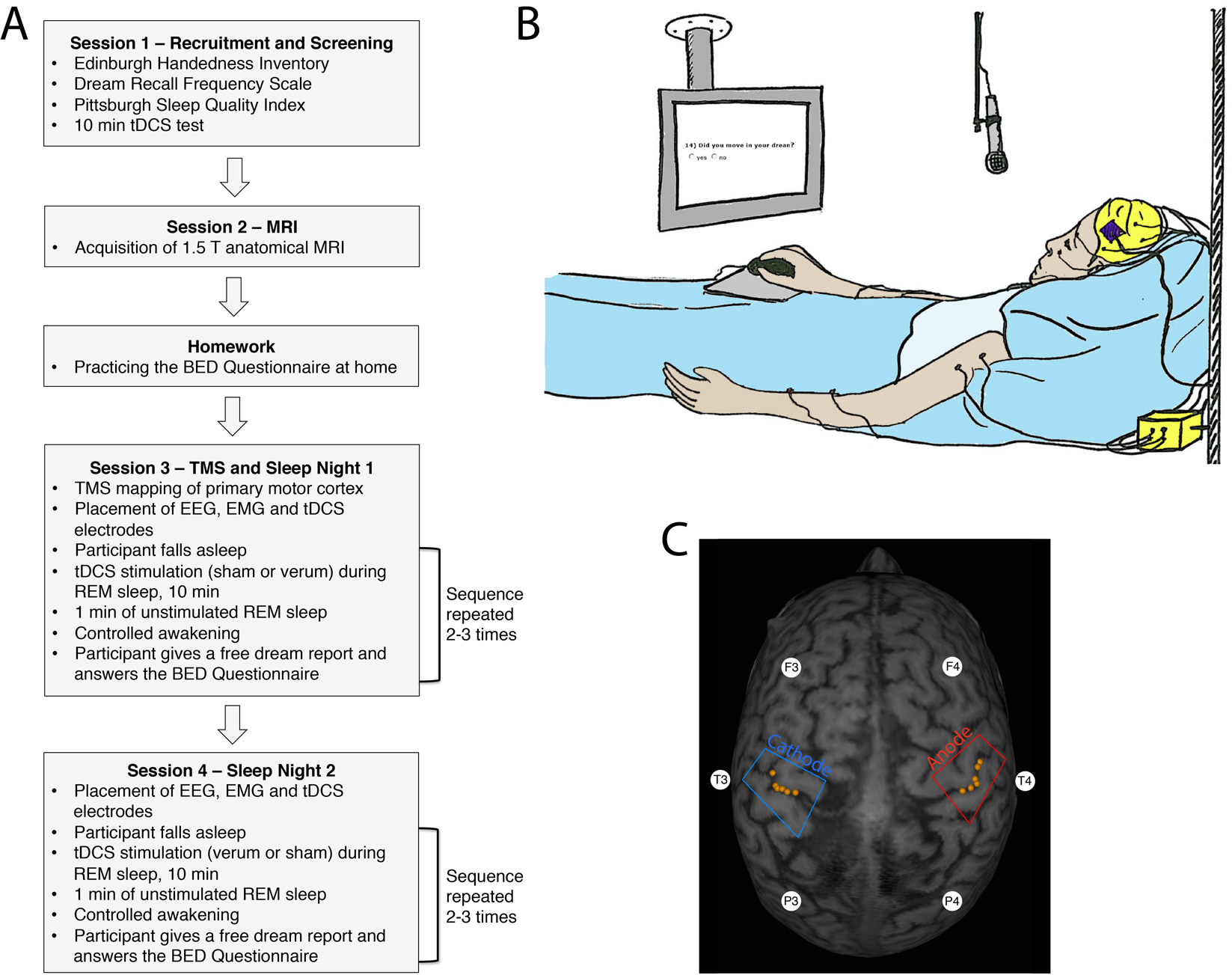Welcome to “Unlocking Serenity: Lucid Dreaming and Sleep Disorders for Optimal Rest.” In this comprehensive guide, we will explore the fascinating world of lucid dreaming and its potential as a natural approach to enhance sleep quality. Additionally, we’ll address common sleep disorders and offer practical insights to help you achieve better sleep naturally. So, let’s embark on this journey to discover the secrets of a peaceful night’s rest!
Understanding Lucid Dreaming
What is Lucid Dreaming?
Lucid dreaming is a unique state of consciousness where the dreamer becomes aware that they are dreaming while still immersed in the dream itself. During a lucid dream, the dreamer gains control over their actions and decisions within the dream, blurring the lines between the dream world and reality. These dreams can be highly vivid and offer a profound sense of presence and self-awareness.
Benefits of Lucid Dreaming
Lucid dreaming isn’t just a captivating experience; it also offers several benefits for the mind and well-being.
- Emotional and Psychological Well-being: Lucid dreaming can provide a safe environment to explore and process emotions, fears, and past experiences, leading to emotional healing and growth.
- Creativity and Problem-Solving: Engaging in lucid dreams can boost creative thinking and help you practice real-life skills, such as public speaking or artistic endeavors.
- Overcoming Nightmares and Sleep-related Anxiety: Lucid dreaming allows you to confront and alter the content of nightmares, reducing their impact on your sleep quality and emotional well-being.
Techniques for Inducing Lucid Dreams
While lucid dreams can occur spontaneously, there are techniques you can practice to increase the likelihood of experiencing them:
- Reality Checks: Perform regular reality checks throughout the day to question whether you are dreaming or awake. This habit will carry over into your dreams, increasing the chance of becoming lucid.
- Keeping a Dream Journal: Keep a journal next to your bed and record your dreams immediately upon waking. This practice enhances dream recall and helps you recognize patterns in your dreams.
- Meditation and Mindfulness: Regular meditation and mindfulness practices can improve self-awareness, making it easier to recognize the dream state while asleep.
- Mnemonic Induction of Lucid Dreams (MILD): Before falling asleep, repeat a phrase like “I will have a lucid dream tonight” to program your mind for lucidity.
- Wake-Induced Lucid Dreams (WILD): This advanced technique involves transitioning directly from wakefulness to a lucid dream state while maintaining awareness during the transition.
Common Sleep Disorders
Insomnia
Insomnia is one of the most prevalent sleep disorders, affecting millions worldwide. It involves difficulty falling asleep, staying asleep, or experiencing non-restorative sleep, leading to daytime fatigue and impaired functioning.
- Causes and Triggers: Insomnia can be caused by stress, anxiety, irregular sleep schedules, caffeine intake, and underlying medical conditions.
- Impact on Health and Daily Functioning: Chronic insomnia can have severe consequences on physical health, mental well-being, and overall quality of life.
Sleep Apnea
Sleep apnea is a disorder characterized by repeated pauses in breathing during sleep, leading to fragmented sleep and oxygen deprivation.
- Understanding Sleep Apnea and Its Types: Sleep apnea is classified into obstructive sleep apnea (OSA) and central sleep apnea (CSA), with OSA being the most common form.
- Symptoms and Risk Factors: Loud snoring, gasping for air during sleep, excessive daytime sleepiness, and obesity are common symptoms and risk factors.
- Health Consequences and Associated Conditions: Untreated sleep apnea can contribute to hypertension, heart disease, and cognitive impairments.
- Natural Remedies for Sleep Apnea: Lifestyle changes, weight management, and positional therapy can help alleviate sleep apnea symptoms.
Restless Leg Syndrome (RLS)
Restless Leg Syndrome (RLS) is a neurological disorder characterized by an irresistible urge to move the legs, often accompanied by discomfort or sensations of tingling or crawling.
- Overview of RLS: RLS typically worsens during periods of inactivity or at night, interfering with sleep quality.
- Identifying Symptoms and Triggers: The symptoms of RLS can vary in severity, and certain medications or medical conditions may exacerbate the condition.
- Lifestyle Changes and Self-Care Practices: Regular exercise, maintaining a consistent sleep schedule, and avoiding stimulants can help manage RLS symptoms.
Narcolepsy

Narcolepsy is a neurological disorder characterized by excessive daytime sleepiness, sudden sleep attacks, and cataplexy (sudden loss of muscle tone).
- What is Narcolepsy? Narcolepsy is a chronic condition caused by the brain’s inability to regulate sleep-wake cycles properly.
- Recognizing Symptoms and Diagnosis: Diagnosis of narcolepsy involves a thorough evaluation of symptoms and may require sleep studies.
- Coping Strategies and Lifestyle Modifications: Managing narcolepsy includes scheduled naps, avoiding sleep-depriving activities, and medication.
The Link Between Lucid Dreaming and Sleep Quality
Lucid Dreaming as a Tool for Sleep Improvement
Lucid dreaming can be a valuable tool for enhancing sleep quality and addressing sleep-related issues. By becoming aware of the dream state, individuals can consciously navigate their dreams, alleviating nightmares and reducing sleep-related anxiety.
How Lucid Dreaming Can Help with Sleep Disorders
For individuals with sleep disorders, lucid dreaming can offer an avenue to explore the subconscious mind and potentially identify underlying psychological issues that impact sleep quality. Moreover, lucid dreaming practices can serve as a complementary approach to improve sleep hygiene and overall well-being.
Research Studies and Evidence
While the field of lucid dreaming is still developing, some research suggests that lucid dreaming may aid in reducing nightmares, promoting emotional resilience, and improving sleep quality. Further studies are needed to explore the full potential of lucid dreaming for sleep disorder management.
Adopting a Natural Approach to Better Sleep
Creating a Sleep-Friendly Environment
A conducive sleep environment plays a vital role in achieving better sleep. Consider the following tips:
- Keep your bedroom cool, dark, and quiet to promote restful sleep.
- Invest in a comfortable mattress and pillows that support proper spinal alignment.
Establishing a Consistent Sleep Routine
A regular sleep schedule can help regulate your body’s internal clock, making it easier to fall asleep and wake up refreshed:
- Go to bed and wake up at the same time each day, even on weekends.
- Engage in relaxing activities, such as reading or meditating, before bedtime.
The Role of Diet and Exercise in Sleep Quality
Your dietary choices and physical activity can significantly impact your sleep patterns:
- Avoid heavy meals, caffeine, and alcohol close to bedtime.
- Engage in regular physical activity, but avoid intense workouts right before bedtime.
Mind-Body Practices for Relaxation and Stress Reduction
Stress and anxiety can disrupt sleep, so consider incorporating mind-body practices into your routine:
- Practice relaxation techniques, such as deep breathing or progressive muscle relaxation.
- Consider yoga or meditation to promote inner peace and reduce stress.
Integrating Lucid Dreaming into Your Sleep Routine
Lucid Dreaming as a Supplemental Tool
While lucid dreaming offers several benefits, it should not replace healthy sleep practices. Instead, consider it as a complementary tool to enhance your sleep quality.
How Lucid Dreaming Can Enhance Sleep Quality
By harnessing the power of lucid dreaming, you can explore your subconscious mind, address sleep-related fears, and foster a more peaceful sleep experience.
Combining Lucid Dreaming Techniques with Natural Approaches
To optimize your sleep quality, consider integrating lucid dreaming techniques with the natural sleep-enhancing approaches discussed earlier. This holistic approach can lead to a more profound and restful slumber.
Safety Considerations and Precautions
Understanding the Limits of Lucid Dreaming
While lucid dreaming can be empowering and transformative, it’s essential to recognize its limitations. Lucid dreaming cannot replace professional medical advice or treatment for sleep disorders.
Potential Risks and Side Effects
For most individuals, lucid dreaming is a safe and enjoyable experience. However, some people may experience sleep disturbances or difficulty differentiating between dreams and reality. If you encounter any adverse effects, consider reducing your lucid dreaming practices.
Consulting with Healthcare Professionals
If you have chronic sleep disturbances or a diagnosed sleep disorder, it’s crucial to consult with healthcare professionals for a comprehensive evaluation and appropriate management.
Frequently Asked Questions (FAQs)
What is sleep hygiene, and how does it affect sleep quality?
Sleep hygiene refers to healthy sleep habits and practices that can significantly impact sleep quality. Proper sleep hygiene involves creating a comfortable sleep environment, maintaining a consistent sleep schedule, and practicing relaxation techniques before bedtime.
Can lucid dreaming be dangerous?
For most individuals, lucid dreaming is a safe and enjoyable experience. However, excessive focus on lucid dreaming and sleep deprivation may lead to fatigue and disrupt regular sleep patterns. It’s essential to strike a balance and prioritize overall sleep health.
Is lucid dreaming suitable for everyone?
While many people can experience lucid dreaming, the frequency and ease of inducing lucid dreams can vary from person to person. Some individuals may naturally have more lucid dreams, while others may require more practice and dedication to develop this skill.
Can lucid dreaming cure sleep disorders?
Lucid dreaming is not a cure for sleep disorders. However, it can be a complementary approach to managing sleep-related issues and improving sleep quality by addressing psychological factors that impact sleep.
Are there any potential risks associated with natural remedies for sleep disorders?
Natural remedies for sleep disorders, such as lifestyle changes and relaxation techniques, are generally safe. However, it’s essential to consult with a healthcare professional if you have underlying medical conditions or if the symptoms persist or worsen.
Conclusion
In conclusion, “Unlocking Serenity: Lucid Dreaming and Sleep Disorders for Optimal Rest” has shed light on the captivating realm of lucid dreaming and its potential as a natural approach to enhance sleep quality. By practicing lucid dreaming techniques and adopting natuhereral sleep-enhancing strategies, you can experience more restful nights and wake up refreshed, ready to embrace each day with vitality and clarity.

Greetings, dear dreamers and seekers of emotional and spiritual healing. I am Aria Blake, a passionate and dedicated professional psychologist…More

